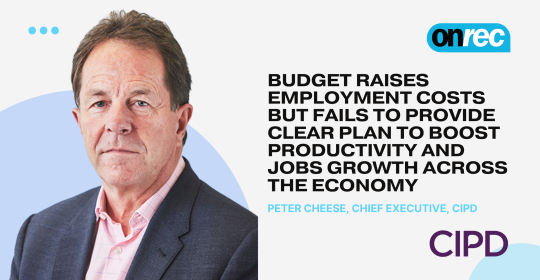Diversity, equity and inclusion (DEI) has become a staple of UK corporate strategies, but in many companies it remains performative, limited to statements, campaigns or one-off initiatives instead of being built into the fabric of the organisation.
New research from not-for-profit organisation Onvero highlights that organisations with mature DEI practices see employees stay nearly four times longer and report 68% higher productivity. Yet only 15% of employees believe inclusion is embedded in their day-to-day culture.
This gap highlights a challenge many HR teams face in moving beyond performative DEI to embedding inclusive practices that drive cultural change.
Why DEI must be woven into leadership behaviours
DEI is often discussed in the context of the general workforce rather than leadership. However, senior leadership can significantly influence the success of DEI, depending on the values and principles they embody.
Onvero’s findings reinforce this: inclusive organisations outperform others, with 68% rating productivity as excellent where inclusion is strong, compared to just 27% where it is weaker.
DEI initiatives, modelled and supported by senior leadership are of phenomenal value to the financial and cultural health of any organisation. However, to reap these rewards, organisations need to know how to “do” DEI in leadership.
DEI in a leadership context is about both representation and company practices.
A diverse leadership is central to fostering diverse, heterogeneous problem-solving within the organisation. Bringing together a collective that varies in characteristics such as race, gender, sexuality, physical ability, and socioeconomic background allows senior leaders to represent and champion the needs of a broader section of the workforce and customer base.
A diverse leadership brings varied lived experience to their roles, which can have many benefits for the organisation. This could be a female leader sharing her experiences of balancing work with motherhood, or a male leader detailing their struggles with mental health, for example. Lived experiences can come in many forms and open the door to increased empathy and more inclusive approaches to work.
Having leaders who can identify narratives in their life that facilitate connections with other communities is fundamental to internalising DEI into work-based practices.
Empathy-driven leadership as a catalyst for belonging
Empathy is not a soft skill; it’s a strategic capability.
Leaders who listen and understand lived experiences can help to create psychological safety for employees, which is the foundation for organisational innovation and engagement. Yet Onvero’s research shows a perception gap: leaders often believe inclusion is embedded, while employees report otherwise.
Empathy-driven leadership bridges this gap. This approach prioritises understanding and values the experiences of others. It involves leaders being honest about their limitations, showing empathy and being willing to support team members without necessarily having all the answers.
Practical leadership behaviours at all levels can include active listening during performance conversations, transparent communication about career paths, and amplifying underrepresented voices in meetings. These actions foster belonging, which Onvero links directly to employee happiness and retention. When employees feel seen and heard, they stay and they thrive.
Practical steps for leaders to model accountability
DEI should be embedded into leadership objectives and key results (OKRs) and performance reviews to transform intent into impact.
Here are some actionable steps to help move DEI into daily practice:
- Leverage employee resource groups (ERGs) and feedback loops to inform strategy and hold leaders accountable. ERGs provide an essential window into the friction or frustrations experienced by employee groups and will often give you a more holistic picture of workplace culture than employee surveys. Senior leaders should meet regularly with ERGs to help them understand the challenges and opportunities within the organisation and how to address them taking into account diverse voices and stakeholders when making decisions.
- Set measurable DEI goals tied to business KPIs. Integrating DEI-conscious development into senior leaders’ OKRs and annual goals will ensure accountability from the top down. This might be quantitative targets such as the number of hires from underrepresented groups, or qualitative targets that include behaviours such as trust and accountability, provided that these are measurable through tools such as employee opinion surveys.
- Publish diversity data and progress reports. By publishing your diversity data, you will establish a comprehensive demographic baseline that helps your organisation set realistic and meaningful DEI goals. This data is essential for informed decision-making across the employee lifecycle, from recruitment to retention. Secondly, tracking your ethnicity data allows your organisation to monitor the effectiveness of your DEI initiatives over time, ensuring that they are helping to improve representation across various levels and departments.
- Make inclusion part of everyday operations. To make inclusion a part of everyday operations, start by establishing a strong foundation of compliant and best practice policies and procedures that demonstrate your organisation’s commitment to making progress around DEI, setting expected standards for all activity and interactions to create a more inclusive work environment. Examples of what this might cover include what inclusive meetings and interactions look like, including using respectful language, stopping people talking over one another and giving credit where credit is due.
Inclusion shouldn’t be a tick box exercise. For senior leaders, that means moving beyond performative gestures to embedding DEI into the fabric of leadership. Empathy-driven behaviours, measurable accountability, and integrated decision-making aren’t just good ethics, they’re good business. The future belongs to organisations where inclusion is not an initiative but a mindset, creating workplaces where everyone can thrive.






